August 22th
All SBMICRO Tutorials are sponsored by IEEE/Electron Device Society – 2022 EDS Brazil Mini-colloquium
09:00 – 10:20 – SBMicro Tutorial – Augmenting silicon technologies with graphene
Francesca Iacopi (University of Technology Sidney, Australia)
Location: SBMicro Cadence Auditorium
Chair: Michelly de Souza (FEI, Brazil)
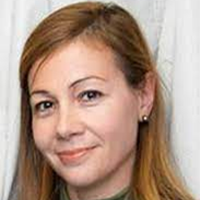
ABSTRACT: Harnessing graphene’s properties on a silicon platform could augment integrated technologies with a broad range of novel miniaturized functionalities. We will review the learnings from the development of our epitaxial graphene on silicon carbide on silicon technology and some of its most promising applications. This platform allows to obtain any complex graphene -coated silicon carbide 3D nanostructures in a site – selective fashion at the wafer -scale and with sufficient adhesion for integration. Key capabilities for nano-optics and metasurfaces in the MIR are specifically unlocked by the graphene/silicon carbide combination. We have recently demonstrated that the sheet resistance of epitaxial graphene on 3C-SiC on silicon is comparable to that of epitaxial graphene on SiC wafers, despite substantially smaller grains. We also indicate that the control of the graphene interfaces, particularly when integrated, can be a more important factor than achieving large grain sizes. In addition, we show that well- engineered defects in graphene are preferable to defect -free graphene for most electrochemical applications, including biosensing. Promising examples of application of this technology in the More than Moore domain include integrated energy storage, MIR sensing and detection, and sensors for electro-encephalography.
BIO: Francesca Iacopi received her MSc in Physics from Roma La Sapienza University, Italy (1996), her PhD in E.E./Materials Science from the Katholieke Universiteit Leuven, Belgium (2004), and she is currently Professor of Nanoelectronics, in the Faculty of Engineering and IT of the University of Technology Sydney, and Chief Investigator of the ARC Centre of Excellence in Transformative Meta-Optical Systems (TMOS). Iacopi has over 20 years’ R&D experience in semiconductor Industry and Academia. Her research focus is the translation of basic scientific advances in nanomaterials and novel device concepts into industrial processes. Her seminal work at IMEC on low-k dielectrics for on-chip interconnects over the 1999-2009 decade has informed the industrial uptake of porous dielectrics into modern semiconductor microprocessors. More recently, she invented a process to harness the properties of graphene on silicon for integrated micro-technologies. Major awards include a Gold Graduate Student Award from the Materials Research Society (2003), a Future Fellowship from the Australian Research Council (2012-2016), a Global Innovation Award (TechConnect, 2014) and was listed among the 30 most innovative Australian engineers in 2018. Prof. Iacopi is a Fellow of the Institute of Engineers Australia, serves in the Board of Governors of IEEE EDS (2021-23), as well as in various technical and strategic committees for IEEE and the Materials Research Society, and was selected as EDS Distinguished Lecturer in 2021.
10:40 – 12:00 – SBMicro Tutorial – New Applications of 2D Materials from Wearable Health to Memory Devices and 5G Switches
Deji Akinwande (UTexas, USA)
Location: SBMicro Cadence Auditorium
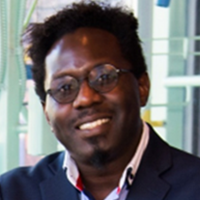
ABSTRACT: This talk will present our latest research adventures on 2D nanomaterials towards greater scientific understanding and advanced engineering applications. In particular, the talk will highlight our work on flexible electronics, zero-power devices, single-atom monolayer memory, non-volatile RF/5G/6G switches, and wearable tattoo sensors for mobile health. Non-volatile memory devices based on 2D materials are an application of defects and is a rapidly advancing field with rich physics that can be attributed to metal adsorption into vacancies. The memory devices can be used for neuromorphic computing and operate as switches up to 500GHz. Likewise, from a practical point, electronic tattoos based on graphene have ushered a new material platform that has highly desirable practical attributes including optical transparency, mechanical imperceptibility, and is the thinnest conductive electrode sensor that can be integrated on skin for physiological measurements including blood pressure monitoring with Class A performance. Much of these research achievements have been published in leading journals.
BIO: Deji Akinwande is an Endowed Full Professor at the University of Texas at Austin, and a Fellow of the IEEE and APS. He received the PhD degree from Stanford University in 2009. His research focuses on 2D materials and nanoelectronics/technology, pioneering device innovations from lab towards applications. Prof. Akinwande has been honored with the 2019 Fulbright Specialist Award, 2017 Bessel-Humboldt Research Award, the U.S Presidential PECASE award, the inaugural Gordon Moore Inventor Fellow award, the inaugural IEEE Nano Geim and Novoselov Graphene Prize, the IEEE “Early Career Award” in Nanotechnology, the NSF CAREER award, several DoD Young Investigator awards, and was a past recipient of fellowships from the Kilby/TI, Ford Foundation, Alfred P. Sloan Foundation, 3M, and Stanford DARE Initiative. His research achievements have been featured by Nature news, Time and Forbes magazine, BBC, Discover magazine, Wall Street Journal, and many media outlets. He serves as an Editor for the IEEE Electron Device Letters and Nature NPJ 2D Materials and Applications. He Chairs the 2022 Gordon Research Conference on 2D materials, and was the past chair of the 2019 Device Research Conference (DRC), and the 2018 Nano-device committee of IEEE IEDM Conference.
13:40 – 15:00 – SBMicro Tutorial – Trends and challenges in Nanoelectronics for the next decade
Elena Gnani (Unibo, Italy)
Location: SBMicro Cadence Auditorium
Chair: Renan Trevisoli – PUC-SP/UFABC
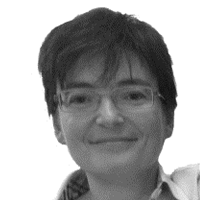
ABSTRACT: In the last decade nanoelectronics devices have been a driving force for societal applications and for a greensustainable world. Key fields such as security, energy, healthcare, transport, communication and infotainment aregaining more and more market so that microelectronics is becoming an inherent part of everyday life. The researchrelated to nanoelectronics can be grouped in three main directions, i.e., More Moore, Beyond CMOS and Morethan Moore. General trends and challenges will be addressed.
BIO: Elena Gnani is Associate Professor at the University of Bologna. Her research interests include the developmentof physical transport models in semiconductor devices and numerical-analysis techniques, with special emphasison the study of quantum-confined devices, such as FinFETs, silicon nanowires (NW), steep-slope devices as wellas quasi ballistic transport in nanoMOSFETs. E. Gnani is author or co-author of more than 180 papers published inreferred international journals and in proceedings of major international conferences. She is presently an IEEESenior Member, EDS Distinguished, member of the EDS Technology Computer Aided Design Committee andserves as an associate editor of the IEEE Transactions on Electron Devices.
15:20 – 16:40 – SBMicro Tutorial – Reliability of Metal Gate / High-K CMOS devices
Andreas Kerber (INTEL, USA)
Location: SBMicro Cadence Auditorium
Chair: Rodrigo Trevisoli Doria (FEI, Brazil)
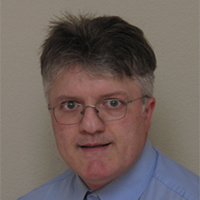
ABSTRACT: Aggressively scaled transistor technologies with metal gate/high-k stacks encounter additional reliability challenges beside bias temperature instability (BTI) in PMOS and NMOS devices, time dependent dielectric breakdown and hot carrier degradation. Time-zero variability and variability induced by device aging is a growing concern which needs to be modeled using stochastic processes. The physical nature of the stochastic process remains under debate and to support model development efforts large statistical data sets are essential. In addition, self-heating during reliability testing can be observed in novel device structures like bulk FinFET, SOI FinFETs, FDSOI and gate-all-around devices and needs proper attention. Furthermore, to increase the confidence in the discrete device reliability models, device-to-circuit correlations need to be established. In this presentation we discuss how to obtain stochastic BTI data for discrete SRAM and logic device beyond 3sigma, address device-to-circuit correlations using ring-oscillators and explore self-heating effects in FinFET and SOI devices.
BIO: Andreas Kerber received his Diploma in physics from the University of Innsbruck, Austria, in 2001, and a PhD in electrical engineering from the TU-Darmstadt, Germany, with honors in 2014. From 1999 to 2000 he was an intern at Bell Laboratories, Lucent Technologies (Murray Hill, NJ, USA) working on the electrical characterization of ultra-thin gate oxides. From 2001 to 2003, he was the Infineon Technologies assignee to International SEMATECH at IMEC in Leuven, Belgium, where he was involved in the electrical characterization of alternative gate dielectrics for sub-100 nm CMOS technologies. From 2004 to 2006, he was with the Reliability Methodology Department at Infineon Technologies in Munich, Germany, responsible for the dielectric reliability qualification of process technology transfers of 110 and 90 nm memory products. During that time he developed a low-cost, fast wafer-level data acquisition setup for time-dependent dielectric breakdown (TDDB) testing with sub-ms time resolution. From 2006 to 2018 he was working for AMD in Yorktown Heights, NY, and GLOBALFOUNDRIES in Malta and East-Fishkill, NY, as a Principal Member of Technical Staff on front-end-of-line (FEOL) reliability research with focus on metal gate / high-k CMOS process technology, advanced transistor architecture and device-to-circuit reliability correlation. From 2018 to 2019 he was with Skorpios Technologies in Albuquerque, NM, working on reliability of Si-photonic devices. From Nov. 2019 to March 2021 he was with ON-Semiconductor in Santa Clara, CA working on product quality management of CMOS image sensors for automotive, consumer and industrial markets. Since March 2021 he is with Intel in Santa Clara, CA working on CMOS reliability for 3D-NAND technology. Dr. Kerber has contributed to more than 110 journal and conference publications and presented his work at international conferences, including the IEDM, VLSI and IRPS. In addition, he has presented tutorials on metal gate / high-k reliability characterization at the IIRW, IRPS and ICMTS. Dr. Kerber has served as a technical program committee member for the SISC, IRPS, IIRW, IEDM, Infos, ESSDERC, is a Senior Member of the IEEE and a Distinguished Lecturer (DL) for the IEEE Electron Devices Society.
August 23th
11:00 – 12:20 – KEYNOTE – Green Technologies for Intelligent and Connected Circuits & Systems Powered by Renewable Energy Sources
Massimo Alioto (NUS, Singapore)
Location: SBCCI Synopsys Auditorium
Chair: Nuno Roma (IST, Portugal)
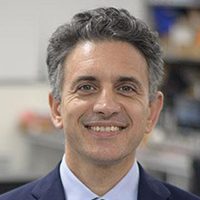
ABSTRACT: The growth in the number of connected devices towards the trillion scale will be fundamentally impeded by batteries as a conventional source of energy, as their deployment in the trillions poses clear economic, logistical and environmental sustainability challenges.
This keynote introduces the key ideas and their silicon demonstrations to enable a new breed of always-on silicon systems from sensing, to computing and wireless communications with no battery inside (or any other energy storage). Sensor interfaces, processors and wireless transceivers fitting existing infrastructure (e.g., WiFi) with power reductions by orders of magnitude are discussed and exemplified by recent silicon demonstrations, and their system integration.
Ultimately, the technological pathway discussed in this keynote supports sustainable growth of applications leveraging large-scale deployments of silicon systems, making our planet smarter. And greener too.
BIO: Massimo Alioto (Fellow, IEEE) is currently a Professor with the Department of Electrical and Computer Engineering, National University of Singapore, Singapore, where he leads the Green IC Group, and also the Director of the Integrated Circuits and Embedded Systems Area and the FD-FAbrICS research center on intelligent&connected systems. Previously, he held positions at the University of Siena (Italy), Intel Labs (USA), University of Michigan, Ann Arbor (USA), University of California at Berkeley (USA), and EPFL (Switzerland).
He has authored or coauthored about 350 publications on journals and conference proceedings. He is the coauthor of five books printed by Springer, including the popular Enabling the Internet of Things—From Circuits to Systems (Springer, 2017). His research interests include self-powered integrated systems, intelligent and connected systems, widely energy-scalable integrated systems, data-driven systems for edge computing, hardware security, and emerging technologies.
Prof. Alioto is the Editor-in-Chief of IEEE Transactions on Very Large Scale Integration (VLSI) Systems, and is/was a Distinguished Lecturer of the IEEE Solid-State Circuits and Circuits and Systems Society, for which he was also a member of the Board of Governors. He is/was the Technical Program Chair (e.g., ISCAS 2023, SOCC, ICECS, and NEWCAS) in numerous conferences, and is in the IEEE “Digital Architectures and Systems” ISSCC Subcommittee and the IEEE ASSCC TPC. He has served as a Guest Editor for several IEEE journal special issues (e.g., JSSC, TCAS-I, TCAS-II, JETCAS) and an Associate Editor for a number of IEEE and ACM journals. He was the Deputy Editor-in-Chief of IEEE Journal on Emerging and Selected Topics in Circuits and Systems. Prof. Alioto is an IEEE Fellow.
14:00 – 14:40 – SBMicro Invited Talk – Ultra-Wide-Bandgap Semiconductor Materials for Next-Generation Power Devices
Stephen Goodnick (Arizona State University, USA)
Location: SBMicro Cadence Auditorium

ABSTRACT: Ultra-wide-bandgap (UWBG) semiconductors are currently of great interest for future power electronics applications beyond current wide-bandgap materials SiC and GaN [1]. Most UWBG materials have bandgaps greater than 5 eV, including diamond (5.5 eV), AlN (6.2 eV), BN (6.4 eV) and more recently Ga2O3 (4.8 eV). The main advantage of UWBG materials is their much larger breakdown voltage for the same device geometry, where the critical field for breakdown depends on bandgap as E_crit∝E_g^(1.83), based on recent analysis of available data [2]. However, other factors need to be considered as well in comparing different materials for power electronics applications, which are often captured in so called figures of merit (FOM) [3] such as the Baliga FOM [4]. UWBG materials are relatively immature compared to SiC and GaN, and to reach their potential in both power electronic converters and rf power devices, a number of challenges need to be overcome in terms of material quality (which degrades the transport and breakdown properties), and doping, which is difficult in UWBGs.
In the present talk, we review the current state of the art in UWBG materials for power electronics, looking at recent results for two-terminal and three-terminal devices, and new regimes of transport that become important at very high fields such as Mott-Gurney space charge limited currents and vacuum emission. We will also discuss the relative FOMs for these materials in terms of the proper treatment of the breakdown voltages and effects due to incomplete ionization. Finally, we evaluate what materials and device structures are best for switched-mode power converters under different operating conditions such as voltage, current density, frequency, duty cycle, and temperature. This analysis is based on minimizing power dissipation (both static and dynamic) in such applications.
BIO: Stephen M. Goodnick (M 1987; SM 1990; F 2004) is currently the David and Darleen Ferry Professor of Electrical Engineering at Arizona State University. He received his Ph.D. degrees in electrical engineering from Colorado State University, Fort Collins, in 1983, respectively. He was an Alexander von Humboldt Fellow with the Technical University of Munich, Munich, Germany, and the University of Modena, Modena, Italy, in 1985 and 1986, respectively. He served as Chair and Professor of Electrical Engineering with Arizona State University, Tempe, from 1996 to 2005. He served as Associate Vice President for Research for Arizona State University from 2006-2008, and presently serves as Deputy Director of ASU Lightworks as well as the DOE ULTRA Energy Frontier Research Center. He is also a Hans Fischer Senior Fellow with the Institute for Advanced Studies at the Technical University of Munich. Professionally, he served as President (2012-2013) of the IEEE Nanotechnology Council, and served as President of IEEE Eta Kappa Nu Electrical and Computer Engineering Honor Society Board of Governors, 2011-2012. Some of his main research contributions include analysis of surface roughness at the Si/SiO2 interface, Monte Carlo simulation of ultrafast carrier relaxation in quantum confined systems, global modeling of high frequency and energy conversion devices, full-band simulation of semiconductor devices, transport in nanostructures, and fabrication and characterization of nanoscale semiconductor devices. He has published over 450 journal articles, books, book chapters, and conference proceeding, and is a Fellow of IEEE (2004) for contributions to carrier transport fundamentals and semiconductor devices.
Circuit/Device Interaction 1
Location: SBMicro Cadence Auditorium
Session Chair: Marcelo Pavanello (FEI, Brazil)
| 14:40 — 15:00 | Experimental behavior of Line-TFET applied to Low-Dropout Voltage Regulator Wenita Silva, Paula Agopian, Joao A. Martino |
| 15:00 — 15:20 | Uniaxially strained silicon influence on Two-stage Operational Transconductance Amplifiers designed with SOI FinFET’s Arllen Ribeiro, Gustavo de Araujo, Joao Martino, Paula Agopian |
| 15:20 — 15:40 | Temperature influence on Operational Transconductance Amplifier designed with triple gate TFET Raphael Camargo, Joao Martino, Paula Agopian |
| 15:40 — 16:00 | Junctionless Nanowire Transistor for Analog Applications: Cascode Current Mirror Configuration Andre Balbino Shibutani, Rodrigo Doria, Renan Trevisoli |
Photovoltaics and Optoelectronics 1
Location: SBMicro Cadence Auditorium
Session Chair: Patricia Lustoza (PUC-RJ, Brazil)
| 16:20 — 16:40 | Pedestal architecture to manufacture TeO2-ZnO waveguides for the development of photonic devices to operate in the infrared region Filipe de oliveira pereira Delboni, Daniel Kendji Kumada, Marco Isaías Alayo Chávez, Luciana Kassab |
| 16:40 — 17:00 | Porous silicon photonic crystals: Inflence of the etch-stop on the optical response. Jackelyne Medina Villanueva, Adhimar Flavio Oliveira, Danilo Roque Huanca |
| 17:00 — 17:20 | First-principles Study of the Electronic and Optical Properties of SnO2 Under Strain Effects A Benyahia, Faycal Djeffal, Z Dibi, Hichem Ferhati |
18:00 – 19:00 – PANEL – Formação de Talentos (in portuguese)
Location: Panels ABISEMI Room
Painel 1: Desenvolvimento de Talentos para a Indústria de Semicondutores
Organizador/Moderador: Marcelo Lubaszewski, UFRGS
Painelistas:
Linnyer Beatrys Ruiz Aylon, Projeto Manná – UEM
Alcides S. Costa, InPlace Design Automation
Rodrigo Alves de Lima Moreto, MTG2i Solutions Ltda
August 24th
09:00 – 09:40 – SBMicro Invited Talk – MOSFET Threshold Voltage Extraction Methods
Adelmo Ortiz-Conde (Universidad Simon Bolivar – Venezuela)
Location: SBMicro Cadence Auditorium
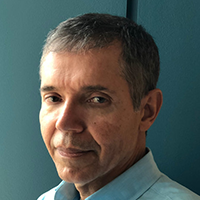
ABSTRACT: In the early days of MOSFETs’ development, the threshold voltage was a very important parameter for circuit simulation because the SPICE models were based on threshold voltage. Nowadays, the most sophisticated SPICE models are based on surface potentials and not on threshold voltage. Nevertheless, the threshold voltage is still the most important electrical parameter in modeling MOSFETs because of reliability issues. We review and scrutinize the several different threshold voltage extraction methods.
BIO: Adelmo Ortiz-Conde received the professional Electronics Engineer degree from Universidad Simón Bolívar (USB), Caracas, Venezuela, in 1979 and the M.E. and Ph.D. from the University of Florida, Gainesville, in 1982 and 1985, respectively.
From 1979 to 1980, he served as an instructor in the Electronics Department at USB. In 1985, he joined the technical Staff of Bell Laboratories, Reading, PA, where he was engaged in the development of high voltage integrated circuits. In 1987, he returned to the Electronics Department at USB where he was promoted to Full Professor in 1995. He was on sabbatical leave at University of Central Florida (UCF), Orlando, from January to August 1994, and again from July to December 1998. He also was on sabbatical leave at “Centro de Investigaciones y Estudios Avanzados” (CINVESTAV) National Polytechnic Institute (IPN), Mexico City, Mexico, from October 2000 to February 2001.
He has coauthored one textbook, Analysis and Design of MOSFETs: Modeling, Simulation and Parameter Extraction (2012 Springer reprint of the original 1st ed. 1998, http://dx.doi.org/10.1007/978-1-4615-5415-8 ), over 190 international technical journal and conference articles (including 20 invited review articles). His present research interests include the modeling and parameter extraction of semiconductor devices.
Dr. Ortiz-Conde is an EDS Distinguished Lecturer and the Chair of IEEE’s CAS/ED Venezuelan Chapter. He was editor of IEEE Electron Device Letters in the area of Silicon Devices and Technology from 2009 to 2018. He was the Region 9 Editor of IEEE EDS Newsletter from 2000 to 2005. He is a Member of the Editorial Advisory Board of various technical journals: Microelectronics and Reliability, “Universidad Ciencia y Tecnología” and “Revista Ingeniería UC”. He regularly serves as reviewer of several international journals and conferences. He was one of the founders of the first IEEE International Caracas Conference on Devices, Circuits, and Systems (ICCDCS) in 1995. In order to make it more international, this conference changed its name to “International Caribbean Conference on Devices, Circuits, and Systems (ICCDCS)” in its sixth edition in 2006. Since 2019, this conference has been sponsored by the IEEE Electron Devices Society (EDS) under the name of “IEEE Latin America Electron Devices Conference (LAEDC)”.
Photovoltaics and Optoelectronics 2
Location: SBMicro Cadence Auditorium
Session Chair: Henri Boudinov (UFRGS, Brazil)
| 09:40 — 10:00 | Vitoria Monteiro, Luis Felipe Machado Dutra, Paulo César Comassetto de Aguirre, Lucas Compassi-Severo, Alessandro Girardi Transferred to August 26th (Session: NEMS, MEMS, Packaging and Processing 2) due to technical problems. |
| 10:00 — 10:20 | III-V solar cells transferred to flexible substrates based on Cu Beatriz Vargas Rocha, Martiane de Oliveira Silva, Luciana Dornelas Pinto, PatrIcia Lustoza de Souza |
| 10:20 — 10:40 | EIS capacitor sensor, with TiO2 dielectric, applied in the evaluation of phosphate in wastewater Huziel Ramos Souto, Fernando Cesar Rufino, Renato Massaroto Beraldo, Sergio Henrique Fernandes, José Alexandre Diniz |
11:00 – 12:20 – KEYNOTE – Reliability of VLSI technologies: impediment and opportunity
Ben Kaczer (IMEC, Belgium)
Location: SBMicro Cadence Auditorium
Chair: Gilson Wirth (UFRGS, Brazil)
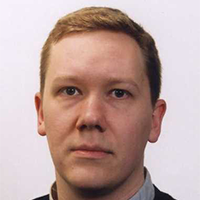
ABSTRACT: Presence of non-idealities and defects in VLSI technologies is an immutable reality, which, however, is often overlooked by device engineers, researchers, technologists, and designers alike. We argue that in fact VLSI reliability “makes or breaks” any new technology. Superficial device reliability optimization is possible using phenomenological observations only, but we argue that solid physical foundations and thorough understanding of the underlying degradation mechanisms are essential both for truly dependable lifetime projections and for novel device pathfinding. Based on the detailed investigation of gate oxide defects, our “defect engineering” approach enables, among other things, optimization paths for SiGe channel devices and new oxidation techniques for advanced gate-all-around architectures, such as nanosheets and forksheets. In deeply scaled devices, degradation mechanisms can be decomposed down to individual defects, with each defect measured separately and its properties described down to single Kelvin temperatures using quantum mechanics. Such knowledge then allows us e.g. to model the degradation statistics of deeply-scaled devices and to predict the likelihoods of their failure. Robust degradation models enable us to project wider safe operating areas, which in turn allow to design better-performing circuitry at a given technology node and thus limited costs. Moreover, the ubiquitous presence of defects can be in fact embraced and the in-depth knowledge of defect properties can be used to our advantage to design new devices and applications, ranging from memory to physically unclonable functions and tamper-aware aging monitors.
BIO: Dr. Ben Kaczer is a Scientific Director in the FEOL reliability group at imec. Dr. Kaczer received the M.S. degree in Physical Electronics from Charles University, Prague, in 1992 and the M.S. and Ph.D. degrees in Physics from The Ohio State University, in 1996 and 1998, respectively. For his Ph.D. research on the ballistic-electron emission microscopy of SiO2 and SiC films he received the OSU Presidential Fellowship and support from Texas Instruments, Inc. In 1998 he joined the reliability group of imec, Leuven, Belgium, where his activities have included the research of the degradation phenomena and reliability assessment of SiO2, SiON, high-k, and ferroelectric films, planar and multiple-gate FETs, circuits, and characterization of Ge, SiGe, III-V, and MIM devices.
He has co-authored more than 500 journal and conference papers and 4 patent groups related to device and circuit reliability, presented a number of invited papers and tutorials, and received 6 IEEE International Reliability Physics Symposium (IRPS) Best and Outstanding Paper Awards, 2 IEEE IPFA Best Paper Awards, and the 2011 IEEE EDS Paul Rappaport Award. In 2019 he was historically the most cited author of IRPS. His h-index on Google Scholar is 62.
Dr. Kaczer has served twice as the chair of the Characterization, Reliability and Yield subcommittee of the International Electron Device Meeting (IEDM; 2007 and 2015) and as a member of various subcommittees of the IRPS (2002—2016) and is currently serving as a member of IRPS management committee (2018—). He was the General Chair of the Semiconductor Interfaces Specialists Conference (SISC; 2006) and continues to act as the conference secretary (2007—). He co-organized the INFOS conference (2005), and served on the INFOS, WoDiM, IPFA, and ICICDT conference committees. He has served on the Editorial Board of IEEE journal of Transaction of Electron Devices for three terms (2011—2019).
14:00 – 14:40 – SBMicro Invited Talk – Field Effect Transistors: From MOSFET to Tunnel FET and Beyond
João Martino (Escola Politécnica da USP, Brazil)
Location: SBMicro Cadence Auditorium
Chair: Dragica Vasileska (Arizona State Univ., USA)
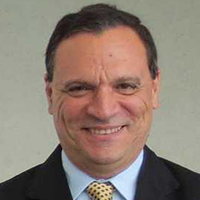
ABSTRACT: The Field Effect Transistor (FET) is the main device for the integrated circuits era. This presentation starts with an overview of the main progress steps of FET evolution (Figure 1) and finish with a discussion of possible FET devices for future technologies. The starting point was the Lilienfeld patent filled in 1925 [1] that was not fabricated due to the technological difficulties. Experimental Metal-Oxide-Semiconductor FET (MOSFET) was only obtained in 1960 [2]. The classical MOSFET was composed by Aluminum (Metal), silicon dioxide (Oxide) and Silicon (Semiconductor). In order to follow the Moore´s Law [3] evolution and to avoid the short channel effects the classical MOSFET have to be upgraded using new materials and new device structures in order to improve the electrostatic control between gate and channel. The MOSFET has been upgraded with different gate electrode like polysilicon heavily doped, TiN and TaN. The gate oxide has also been replaced to high-k dielectrics like SiON, HfSiON and HfO2 in order to avoid gate leakage current. Finally, the well-known silicon channel has also been modified to strained silicon, SiGe, Ge, InGaAs in order to boost the carriers mobility. The MOSFET structure has been improved from Bulk MOSFET to SOI (Silicon-on-Insulator) [4] MOSFET and later from planar to vertical multiple-gate devices like FinFET [5], Triple Gate and Gate all around devices like nanowire [6] and nanosheets [7] for enhancing the gate to channel electrostatic coupling. New type of device conduction mechanism like Tunnel-FET [8] devices (TFETs) have been studied to replace the conventional drift-diffusion conduction mechanisms due to the benefits obtained by tunneling conduction. The analog behavior of the TFET [9] device and some basics circuits like operational transconductance amplifier designed with TFETs [10-12] will be discussed and compared with conventional tecnologies. Finally, reconfigurable transistors will also be discussed [13].
BIO: Joao Antonio Martino (SM’07) was born in Sao Paulo, Brazil, in 1959, preserving both nationalities: Brazilian and Italian. He received the degree in electrical engineering from FEI University Center, in 1981, and starting on microelectronics field since 1982 on graduated program, when he received the Master (NMOS technology) and Ph.D (CMOS technology) degrees in 1984 and 1988, respectively, in electrical engineering (microelectronics area) from University of Sao Paulo (USP), Brazil. He worked as a post-doctoral researcher in joint collaboration between Imec (Interuniversity Microelectronic Center)/KU Leuven (Catholic University of Leuven), Belgium and University of Sao Paulo, from 1989 to 1994 in SOI technology and devices. In 1992, he joined the Department of Electronic Systems of University of Sao Paulo, Brazil, where he has been full Professor since 2005. He is also head of CMOS SOI group since 1990 and head of Laboratory of Integrated Systems since 2017, both from University of São Paulo. He was also the head of Department of Electronic Systems from University of Sao Paulo from 2009 to 2013. He is author and co-author of more than 600 technical journal papers and conference proceedings and author/editor of 7 books. He completed the supervision of 65 graduate students, 35 masters and 22 PhDs as main supervisor and 6 masters and 2 PhDs as co-supervisor. He introduced the study of SOI devices characterization and technology in Brazil in 1990. He was the head of the first FinFET fabricated in South America in 2012 and de first SOI reconfigurable FET (SOI RFET) in 2015. His current research interests include electrical characterization and fabrication of SOI, multiple gate (FinFET, nanowire and nanosheet), Tunnel-FET, Reconfigurable FET and Bio-FET devices. The application of new transistors in basic analog circuits is also studied. He is Senior Member of IEEE, Member of Electrochemical Society. He was Vice-Chair of Region 9 Subcommittee for Regions/Chapters of IEEE Electron Device Society (EDS/IEEE) from 2013 to 2018. He has been Chapter Chair of South Brazil Session of EDS/IEEE since 2007 and Distinguished Lecturer of EDS/IEEE since 2008
Circuit/Device Interaction 2
Session Chair: Paulo C. C. de Aguirre (UNIPAMPA, Brazil)
Location: SBMicro Cadence Auditorium
| 14:40 — 15:00 | An Analytical Gate Delay Variability Model for Low-Power and Low-Voltage Applications Caroline Pinheiro Garcia, Thiago Both |
| 15:00 — 15:20 | Impact of using octogonal layout style in planar power MOSFETS Gabriel Silva, Salvador Gimenez |
| 15:20 — 15:40 | Total Ionizing Dose (X-Ray) Effects on the Mismaching of the Analog MOSFETs layouted with Different Layout Sytles Vinicius Vono Peruzzi, Gabriel Augusto Silva, Salvador Pinillos Gimenez |
| 15:40 — 16:00 | Gas monitoring system with a Quantum Bragg Mirror Detector (QBMD) David Souza |
Device Characterization, Modeling and Simulation 1
Location: SBMicro Cadence Auditorium
Session Chair: Salvador P Gimenez (FEI, Brazil)
| 16:20 — 16:40 | Fabrication and Electrical Characterization of ISFET for H2O2 sensing. Pedro Duarte, Ricardo Rangel, Daniel Ramos, Leonardo Yojo, Carlos Augusto Bergfeld Mori, Katia Sasaki, Paula Agopian, Joao Martino |
| 16:40 — 17:00 | Nanowire TFET with different Source Compositions applied to Low-Dropout Voltage Regulator Rodrigo Tolêdo, Joao Martino, Paula Agopian |
| 17:00 — 17:20 | Standard MOS Diodes Composed by SOI UTBB Transistors Fernando Costa, Renan Trevisoli, Carlos Eduardo Capovilla, Rodrigo Doria |
| 17:20 — 17:40 | Al Source-Drain Schottky contact enabling Ntype (Back Enhanced) BESOI MOSFET Henrique Lanfredi Carvalho, Ricardo Rangel, Katia Sasaki, Joao A. Martino, Leonardo Yojo, Paula Agopian |
18:00 – 19:00 – PANEL – International Industry (in english)
Location: Panels ABISEMI Room
The Brazilian Semiconductor Industry: New Opportunities?
Organizer: Marcelo Lubaszewski, UFRGS
Moderator: Arthur Liraneto, CESAR
Panelists:
Murilo Pessatti, Chipus Microelectronics
Julio Leão da Silva Jr., Ensilica
Júlio de Oliveira, Idea! Electronic Systems
August 25th
09:00 – 09:40 – SBMicro Invited Talk – Organic Thin-Film Based Synaptic Devices
Xu Gao (Institute of Functional Nano & Soft Materials – FUNSOM, Soochow University, P. R. China)
Location: SBMicro Cadence Auditorium
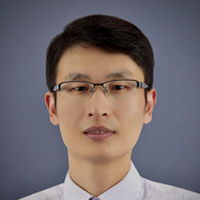
ABSTRACT: Synaptic devices are recognized as the essential component of brain-inspired neuromorphic hardware, which have attracted extensive attention in emerging neuron circuits and artificial intelligence. By means of biocompatibility, low-cost, and a simple fabrication process, organic thin-film synaptic devices may offer a strategy for building blocks of organic neuromorphic circuits. This presentation will briefly introduce the device design, device behaviors and working mechanism of several types of organic synaptic devices, such as organic thin-film memristors and organic thin-film memtransistors. The synaptic plasticity, including both short-term and long-term plasticity, has been successfully emulated with our devices. The robust device performance makes it a potential candidate for hardware implementation of future neural network.
BIO: Xu Gao received his PhD degree from Nanjing University, China, in 2011. After that, he joined Soochow University, China, as a lecturer. From 2013 to 2014, he worked as a postdoctoral researcher in National Institute for Materials Science (NIMS), Japan. He is currently an associate professor of Institute of Functional Nano & Soft Materials (FUNSOM), Soochow University, China. His research focuses on device development and device physics in semiconductor devices, including organic/inorganic/hybrid field-effect transistors, nano-floating gate memories, and neuromorphic devices. He has published over 80 research papers with an H-index of 24.
Device Characterization, Modeling and Simulation 2
Location: SBMicro Cadence Auditorium
Session Chair: Renan T Doria (UFABC, Brazil)
| 09:40 — 10:00 | Experimental Comparison of Junctionless and Inversion-Mode Nanowire MOSFETs Electrical Properties at High Temperatures Rhaycen Rodrigues Prates, Marcelo Pavanello |
| 10:00 — 10:20 | Analysis of Variability in Transconductance and Mobility of Nanowire Transistors Lucas Mota Barbosa da Silva, Michelly de Souza, Marcelo Pavanello |
| 10:20 — 10:40 | Modeling Quantum Confinement in Multi-Gate Transistors with Effective Potential Caroline Soares, Pranay K. R. Baikadi, Gilson Wirth, Alan Rossetto, Marcelo Pavanello, Dragica Vasileska |
11:00 – 12:20 – KEYNOTE – State of Video Codecs: AV1 and VVC algorithms and deployment
Iole Moccagatta (INTEL, USA)
Location: SBCCI Synopsys Auditorium
Chair: Bruno Zatt (UFPel, Brazil)
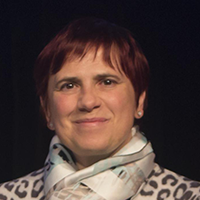
ABSTRACT: TBD
BIO: Dr. Iole Moccagatta is a Principal Engineer at Intel working on HW Multimedia IPs that are integrated on Intel platforms. Prior to Intel she hold the position of Senior Video Architect at NVIDIA, and that of Science Director at IMEC, Belgium. Dr. Moccagatta has been a very active member of MPEG, ITU-T, and JPEG, where she has represented US interests and companies and made a large number of technical contributions. A number of those have been included in MPEG and JPEG standards. She is currently Co-chair of the MPEG/ITU-T Joint Video Experts Team (JVET) Ad-Hoc Group on H.266/VVC Conformance and Co-editor of the H.266/VVC Conformance Testing document. Dr. Moccagatta has also been an active participant of the Alliance for Open Media (AOM) AV1 Codec WG, where she has co-authored two adopted proposals. She currently represents Intel in the AOM Board. Dr. Moccagatta is also serving as IEEE Signal Processing Society (SPS) Regional Director-at-Large Regions 1-6, supporting and advising Chapters and their officers, providing input on how to serve and engage the SPS community in general, and the SPS industry members in particular, and using her professional network to attract new volunteers to serve in SPS subcommittees and task forces. Dr. Moccagatta is the author or co-author of more than 30 publications, 2 book chapters, and more than 10 talks and tutorials in the field of image and video coding. She holds more than 10 patents in the same fields. For more details see Dr. Moccagatta professional site at http://alfiole.users.sonic.net/iole/. Dr. Moccagatta received a Diploma of Electronic Engineering from the University of Pavia, Italy, and a PhD from the Swiss Federal Institute of Technology in Lausanne, Switzerland.
14:00 – 14:40 – SBMicro Invited Talk – Performance of Silicon-On-Insulator Nanowire and Nanosheet MOSFETs In a Wide Temperature Range
Marcelo Pavanello (Centro Universitario FEI, Brazil)
Location: SBMicro Cadence Auditorium
Chair: Dragica Vasileska (Arizona State Univ., USA)
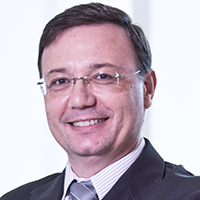
ABSTRACT: The aggressive scaling of MOSFET dimensions triggered the search for alternative solutions to the traditional planar transistors for future technological nodes, due to the occurrence of undesirable short-channel effects (SCE). Nanowire and nanosheet MOSFETs are considered excellent enablers for the continuation of MOSFET scaling into the nanometer regime [1], replacing the FinFETs. These structures provide excellent electrostatic control of the channel, appreciably reducing the occurrence of SCE. Triple-gate Ω-shaped MOSFETs with both HFIN and WFIN of similar dimensions, in the order of 10 nm, referred to as nanowires (NWs) in the literature, are promising contenders. Due to their tridimensional architecture, NWs have demonstrated great scalability with both Si [1] and SiGe material [2]. Additionally, the small cross-section of nanowires enabled the fabrication of devices without PN junctions, so-called junctionless transistors [3]. Nanowires demonstrated excellent electrical properties for both digital and analog applications [4,5]. Also, recently, the ability to stack 2 or more levels of nanowires and/or nanosheets and make them operate as a single transistor improved the MOSFET current per footprint while retaining the excellent SCE immunity of single-level nanowires [6].
This work will present the performance of single-level, stacked nanowires and nanosheets fabricated in Silicon-On-Insulator (SOI) substrates. Analytical models for describing the electrical characteristics of these devices will be presented [7,8]. Also, the performance of these devices operating in a wide range of temperatures, from 600 K down to the cryogenic range [9,10,11], looking for their integration in future quantum computing applications, will be presented and discussed. Peculiarities of these devices operating in extreme temperatures, such as quantum transport in narrow nanowires at cryogenic temperatures and degraded Gate-Induced Drain Leakage at high temperatures will be presented and discussed.
BIO: Marcelo Antonio Pavanello (S´99-M´02-SM´05) is a Full Professor at the Electrical Engineering Department of Centro Universitario FEI (FEI University). Dr. Pavanello is a Senior Member of the IEEE and a member of the Brazilian Microelectronics Society. He is also Researcher Associated with the National Council for Scientific Development (CNPq), Brazil. Since 2007 he serves as IEEE Electron Devices Society (EDS) Distinguished Lecturer and has been nominated to the Compact Modeling Technical Committee of EDS between 2018 and 2021. Since 2019 he is an Editor of IEEE Transactions on Electron Devices journal for Process and Device Modeling. Since 2021 he is an Editor of the IEEE Access journal. He is the author or co-author of more than 400 technical papers in peer-reviewed journals and conferences and the author/editor of 6 books. Dr. Pavanello coordinates several research projects fomented by Brazilian agencies like FAPESP, CNPq, and Capes. He also supervised several Ph.D. dissertations, MSc thesis, and undergraduate projects in Electrical Engineering.
His current interests are the compact modeling, fabrication, electrical characterization, and simulation of SOI CMOS transistors with multiple gate configurations and silicon nanowires; the wide temperature range of operation of semiconductor devices; the digital and analog operation of novel channel-engineered SOI devices and circuits.
Dr. Pavanello received the Electrical Engineering degree from FEI University in 1993, receiving the award “Instituto de Engenharia” given for the best student among all the modalities of engineering programs offered at FEI. He received his M. Sc. and Ph. D. degrees in 1996 and 2000, respectively, in Electrical Engineering (Microelectronics) from the University of São Paulo, Brazil. From August to December 1998 he was with Laboratoire de Microélectronique from Université Catholique de Louvain (UCL), Belgium, working in the fabrication and electrical characterization of novel channel-engineered Silicon-On-Insulator (SOI) transistors. From 2000 to 2002 he was with the Center of Semiconductor Components and Nanotechnologies, State University of Campinas, Brazil, where he worked as a post-doctoral researcher in the development of a CMOS n-well process. In 2003 he joined FEI University Between 2010 and 2020 he also served as Vice-Rector for Teaching and Research at FEI. In 2008 he has been with Université Catholique de Louvain, Belgium, as a visiting professor.
Novel Materials and Devices 1
Location: SBMicro Cadence Auditorium
Session Chair: Marcilei A Guazzelli (FEI, Brazil)
| 14:40 — 15:00 | Capping of InAs quantum dots by migration enhanced epitaxy Victor Curbelo, Ahmad Alzeidan, Alain,ré Quivy |
| 15:00 — 15:20 | Dual-color detection using two quasi-bound states in the continuum in an InGaAs/InAlAs superlattice Pedro Henrique Pereira, Germano Maioli Penello, Vitor Bento Sousa, Rudy Massami Kawabata, Mauricio Pamplona Pires, Patricia Lustoza de Souza |
| 15:20 — 15:40 | Electrochemical electrodes based on laser Induced Graphene on PECVD a-SiC:H and Polyimide Deissy Johanna Feria Garnica, Aline Pinto, Marcelo N.P. Carreño, Mauro Bertotti, Inés Pereyra |
| 15:40 — 16:00 | Development of the prism-coupler model for the design of a biosensor based on SPR technology for fast diagnostics Angela Mazzeo, Gustavo Paganini Canal, Marco Isaías Alayo Chávez |
NEMS, MEMS, Packaging and Processing 1
Location: SBMicro Cadence Auditorium
Session Chair: Stanislav Moshkalev (UNICAMP, Brazil)
| 16:20 — 16:40 | The Delamination Caused by Flux Residue in System-in-Package Devices Andrei Alaferdov, Ricardo Yoshioka, Carolina C.P. Nunes, Matheus Dias Sousa, Valdeci Carvalho, Igor Fernandes Namba, Claudemir Coral |
| 16:40 — 17:00 | On the importance of atom probe tomography for the development of new nanoscale devices Thales Borrely, Alain Quivy, Tao-Yu Huang, Yu-Chen Yang, Rachel S. Goldman |
| 17:00 — 17:20 | A method for deposition rate estimation on a low-cost home-built DC sputter system Giuseppe Cirino, Henrique Pinto, Renato G. Jasinevicius |
| 17:20 — 17:40 | Characterization of TiO2 deposited by ALD for SiC MOS capacitor application Rodrigo Reigota César, Renato Beraldo, Ednan Joanni, Melissa Mederos, Ricardo Cotrin Teixeira, Renato Minamisawa, José Alexandre Diniz |
18:00 – 19:00 – PANEL – PDI Microeletrônica (in portuguese)
Location: Panels ABISEMI Room
Formação de RH e Projetos de PD&I no Brasil: Perspectivas para a Microeletrônica
Organizador: Marcelo Lubaszewski, UFRGS
Moderadora: Linnyer Beatrys Ruiz Aylon, SBMicro
Painelistas:
Alexandre Motta, COAPD – CNPq
Valeria Arruda, Engenharias IV – CAPES
Carlos Eduardo Pereira, Embrapii
August 26th
NEMS, MEMS, Packaging and Processing 2
Location: SBMicro Cadence Auditorium
Session Chair: Luciana Kassab (FATECSP, Brazil)
| 09:00 — 09:20 | MEM Relay For the Internet of Things Applications Ren Li, Hossein Fariborzi |
| 09:20 — 09:40 | Elaboration of Graded Band-Gap a-SiC Thin-Film Using RF Magnetron Sputtering Technique Faycal Djeffal, A Bendjerad, A Benhaya, Hichem Ferhati |
| 09:40 — 10:00 | Structural and Electrical Properties of a-Si Schottky Diode based on ZnO Top Layer and Ag Intermidiate Ultrathin-Films K Kacha, Faycal Djeffal, A Bendjerad, Hichem Ferhati, A Benhaya |
| 10:00 — 10:20 | Characterization of silicon thin films obtained by MicroHeater MEMS based-microLPCVD technique Ricardo Aparecido Rodrigues de Oliveira, Daniel Dias da Purificação, Inês Pereyra Alvarez, Marcelo Nelson Paez Carreño |
| 10:20 — 10:40 | Parameter Extraction Methodology of 1D2R PV Cell Electrical Model for Indoor Applications Vitoria Monteiro, Luis Felipe Machado Dutra, Paulo César Comassetto de Aguirre, Lucas Compassi-Severo, Alessandro Girardi |
11:00 – 12:20 – KEYNOTE – Towards Next Generation Logic Synthesis and Verification
Alan Mishchenko (University of California, Berkeley, USA)
Location: SBMicro Cadence Auditorium
Chair: André Reis (UFRGS, Brazil)
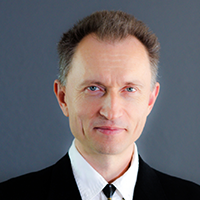
ABSTRACT: Given the progress achieved over the last fifty years in logic synthesis and verification, it is tempting to believe that most of the research discoveries have already been made, and the role of future researchers and engineers is just to maintain the CAD tools and occasionally make small changes, such as adding concurrency or employing machine learning to generate better scripts. Nothing could be farther from the truth. In this talk, we explore several orthogonal innovations in the fundamental research used to build synthesis tools targeting FPGAs and ASICs. These innovations include using novel data structures, leveraging synergistic optimization engines, and simultaneously exploring previously-unrelated search spaces. Most of these improvements are work-in-progress with early results demonstrating better quality and faster runtimes.
BIO: Alan graduated with M.S. from Moscow Institute of Physics and Technology (Moscow, Russia) in 1993 and received his Ph.D. from Glushkov Institute of Cybernetics (Kiev, Ukraine) in 1997. In 2002, Alan joined the EECS Department at University of California, Berkeley, where he is currently a full researcher. His research is in computationally efficient logic synthesis, formal verification, and machine learning.
14:00 – 14:40 – SBMicro Invited Talk – Innovation by ASIC design, Training and Related Issues
Jacobus Swart (FEEC/UNICAMP, Brazil)
Location: SBMicro Cadence Auditorium
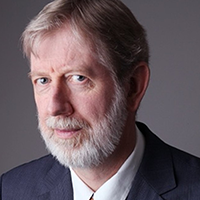
ABSTRACT: Innovation has been increasingly intense in many fields and often with the use of ASIC. Smart cities, IoT, Industry 4.0, wearables, medicine, security, artificial intelligence, VR/AR, are some examples that require new and specific components, forming segmented and differentiated markets. This scenario gives opportunity and need for many new products, requiring new projects and many CI designers.
IC prototyping using the multi-project wafer (MPW) model has been a common practice for teaching, research and development and followed by engineering and/or small production, before reaching full production.
The successful ASIC design is based on many issues related to microelectronics knowledge. A good designer needs to have good skills in these subjects, have gone through intense training in EDA tools and practical training through actual tape-out, fabrication and testing.
The MPW model started in the 1970s and has been successfully used in electronic IC prototyping, and today it is also applied in MEMS and IC prototyping and photonics, being offered through EUROPRACTICE and other organizations.
The APCI program provides EDA licenses to universities in the country, in addition to funding ASIC prototyping by international MPW service, thus contributing to development and innovation in the country.
BIO: Jacobus W. Swart received Bel and PhD in Electrical Engineering in 1975 and 1981, respectively, from the Polytechnic School of the University of São Paulo. After his PhD, he worked at the following institutions: K. U. Leuven, Belgium, 1982-83, as a postdoc; CTI, Campinas, 1984; LSI-University of São Paulo, 1985-88; SID Microeletrônica, 1986-1987 as part-time researcher; RTI, USA, 1991, as Visiting Scientist and since 1988 at the State University of Campinas, as Full Professor until his retirement in 2013, when he assumed the position of Collaborating Professor. He served as director of the Center for Semiconductor Components from April 1998 to April 2005. From May 2007 to June 2011, he was on leave from the University to serve as Director of CTI Renato Archer. From 2013 to 2019 he worked for imec, Belgium, as a representative in Brazil. He has worked on CCD, nMOS, CMOS, HBT and MEMS process integration, device characterization and modeling, gettering processes, plasma processes, rapid thermal processing, silicide formation and characterization, and integrated circuit design. He has published about 80 articles in International Journals and over 200 full-length articles in Proceedings of International Conferences. He supervised 62 graduate students, at master and PhD level. He is a CNPq PQ Scholar, Level 1A and is an Elected Member of the Academy of Sciences of the State of São Paulo and of the Nacional Engineering Academy. He is an IEEE Fellow, a member of SBMicro and has been president of SBMicro twice, 1988-90 and 1998-2000. He was the general coordinator of a large research network in Brazil, called NAMITEC, from 2001 to 2016. He is currently CFO of SBMicro.
Device Characterization, Modeling and Simulation 3
Location: SBMicro Cadence Auditorium
Session Chair: Alessandro Girardi (Unipampa, Brazil)
| 14:40 — 15:00 | Monte Carlo Analysis of a Fractional-Order MOS Capacitor using Fractal Tree Implementation Lucas Almir Fernandes, Marco Isaías Alayo Chávez, Joao Martino |
| 15:00 — 15:20 | Impact of Temperature Effects in the Zero Temperature Coefficient of the Ellipsoidal MOSFET Marcos Paulo Braga de Lima, Marco Aurélio Pinhel Peixoto, Marcello Marcelino Correia, Egon Galembeck, Salvador Gimenez, Luciano Camillo |
| 15:20 — 15:40 | Influence of multiple conduction channels on MISHEMT’s intrinsic voltage gain Bruno Canales, Paula Agopian |
| 15:40 — 16:00 | Experimental Analysis of MISHEMT Multiple Conductions from 200K to 450K Welder Perina, Joao A. Martino, Paula Agopian |
Times are expressed in GMT-3
